Silvercrest Z31370A, Z31370B User Manual [en, pl, cs, de]
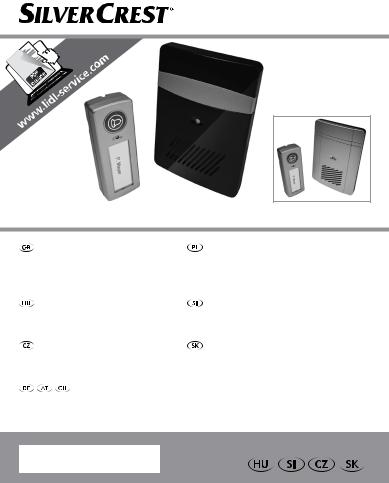
Wireless Doorbell
Wireless Doorbell |
Dzwonek do drzwi |
|
Operation and Safety Notes |
sterowany radiowo |
|
|
Wskazówki |
dotyczące obsługi i bezpieczeństwa |
Ajtócsengő |
Brezžični zvonec |
|
Kezelési és biztonsági utalások |
Navodila za upravljanje in varnostna opozorila |
|
Bezdrátový zvonek |
Zvonček na dvere |
|
Pokyny pro obsluhu a bezpečnostní pokyny |
Pokyny pre obsluhu a bezpečnostné pokyny |
|
Funktürklingel
Bedienungs - und Sicherheitshinweise
IAN 102932
GB |
Operation and Safety Notes |
Page |
7 |
PL |
Wskazówki dotyczące obsługi i bezpieczeństwa |
Strona |
20 |
HU |
Kezelési és biztonsági utalások |
Oldal |
33 |
SI |
Navodila za upravljanje in varnostna opozorila |
Stran |
46 |
CZ |
Pokyny pro obsluhu a bezpečnostní pokyny |
Strana |
60 |
SK |
Pokyny pre obsluhu a bezpečnostné pokyny |
Strana |
73 |
DE / AT / CH |
Bedienungsund Sicherheitshinweise |
Seite |
86 |
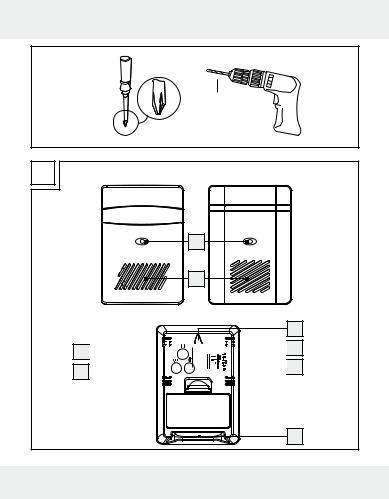
You need |
|
Potrzebujecie |
|
Szüksége van |
ø 6 mm |
Potrebujete |
Potřebujete
Budete potrebovať
Sie benötigen:
A |
Z31370A |
Z31370B |
|
1
6
8
2 

 4 3
4 3 





 5
5
7
3
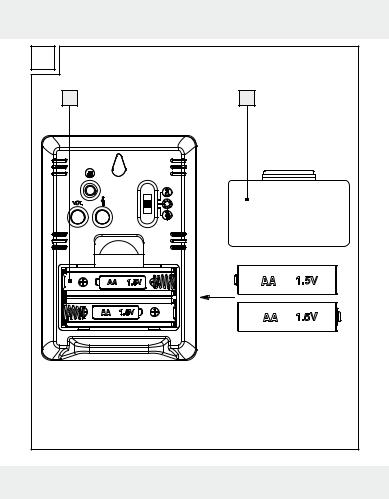
B |
|
10 |
9 |
4 |
|
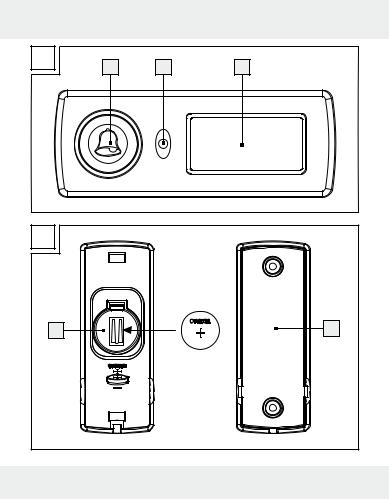
C |
13 |
11 |
12 |
|
D |
14 |
15 |
5
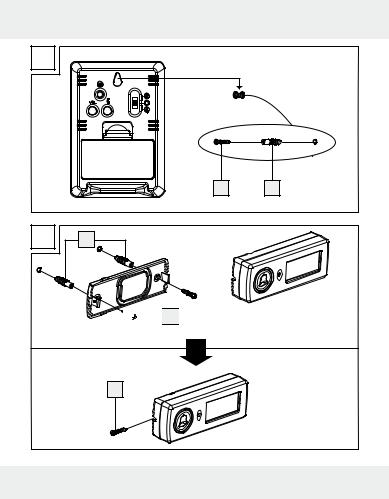
E |
16 17
F |
17 |




 16
16
18
6

|
Table of contents |
|
Introduction |
|
|
Intended use............................................................................................ |
Page |
8 |
Technical data........................................................................................ |
Page |
8 |
Included items......................................................................................... |
Page |
9 |
Parts and features................................................................................... |
Page |
9 |
Safety..................................................................................................... |
Page |
10 |
General safety information................................................................... |
Page |
11 |
Safety instructions for batteries............................................................. |
Page |
11 |
Assembly............................................................................................ |
Page |
13 |
Preparing for use |
|
|
Inserting / replacing the batteries......................................................... |
Page |
13 |
Operation |
|
|
Synchronising transmitter / receiver...................................................... |
Page |
14 |
Setting the signal type........................................................................... |
Page |
15 |
Setting the volume.................................................................................. |
Page |
15 |
Selecting the chime................................................................................ |
Page |
16 |
Troubleshooting...................................................................................... |
Page |
16 |
Cleaning and maintenance................................................ |
Page |
16 |
Disposal................................................................................................ |
Page |
17 |
Information |
|
|
Declaration of conformity...................................................................... |
Page |
18 |
Warranty............................................................................................ |
Page |
18 |
GB 7

Introduction
Wireless Doorbell
Introduction
Keep these instructions in a safe place. If you pass the product on to anyone else, please ensure that you also pass on all the documentation.
Intended use
This product is intended for the wireless transmission of the doorbell chime. The product is not intended for commercial use.
Technical data
Range: |
100 m (unobstructed area) |
||||
Transmission frequency: |
433 MHz |
|
|
||
Battery types: |
Receiver: 2 x 1.5 V |
|
|
|
(type AA / LR6), |
|
|
||||
|
Transmitter: 1 x 3 V |
|
|
(type CR2032) |
|
|
|
|
|||
Receiver: |
Audible signal volume (at maximum volume |
||||
|
setting): min. 73 dB (at a distance of 1 m |
||||
|
from the device) |
|
|
||
Transmitter: |
IP rating: IP44 |
|
|
||
8 GB
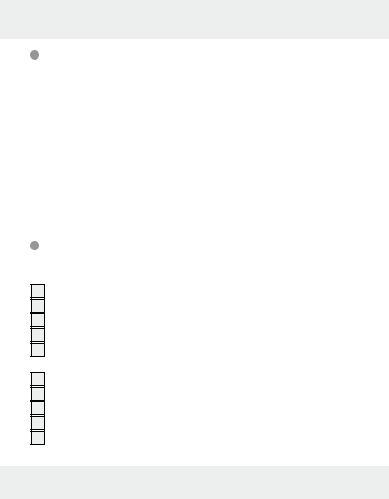
Introduction
Included items
1Transmitter
1Receiver
2Batteries 1.5 V  , type AA (receiver)
, type AA (receiver)
1 Batteries 3 V  , type CR2032 (transmitter)
, type CR2032 (transmitter)
4 Screws (for transmitter and for mounting the receiver on a wall) 3 Dowels
5 Exchangeable name plates (for the doorbell)
1 Doorbell cover
1 Operating instructions
Parts and features
Receiver (Figs. A / B):
1Signal indicator
2Synchronisation button
3Volume button
4Melody selection button
5Signal type selector button (optical, acoustic, optical and acoustic signal)
6Speaker
7Stand
8Hanger
9Battery compartment cover
10 Battery compartment
GB 9

Introduction / Safety
Transmitter (Figs. C / D):
11Signal indicator
12Name plate
13Chime button
14Battery compartment
15Holder (for wall mounting)
Mounting (Figs. E / F):
16Screw
17Dowel
18Screw (for transmitter)
 Safety
Safety

 Read all safety information and instructions. Failure to comply with the safety information and instructions may cause fire and / or serious injury.
Read all safety information and instructions. Failure to comply with the safety information and instructions may cause fire and / or serious injury.
YOU SHOULD STORE ALL SAFETY INFORMATION AND INSTRUCTIONS IN A SAFE PLACE IN CASE YOU NEED TO REFER TO THEM AGAIN IN THE FUTURE!
10 GB
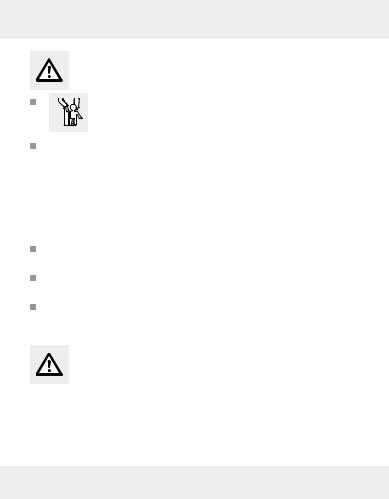
Safety
General safety information

 Children often underestimate risks.
Children often underestimate risks.
Always keep children away from the product. This is not a toy.
This appliance can be used by children aged from 8 years and above and persons with reduced physical, sensory or mental capabilities or lack of experience and knowledge if they have been given supervision or instruction concerning use of the appliance in a safe way and understand the hazards involved. Children shall not play with the appliance. Cleaning and user maintenance shall not be made by children without supervision.
Check that all parts are in sound condition. If you use damaged parts when assembling the device, you risk injury.
Check that all parts have been assembled correctly. There is a risk of injury if the device is not properly assembled.
Keep the device away from open flames or sources of heat (e.g. burning candles).
Safety instructions for batteries

 DANGER TO LIFE! Batteries can be swallowed, which can prove fatal. Consult a doctor immediately if anyone swallows a battery.
DANGER TO LIFE! Batteries can be swallowed, which can prove fatal. Consult a doctor immediately if anyone swallows a battery.
GB 11

Safety
EXPLOSION HAZARD! Never recharge nonrechargeable batteries, short-circuit and / or open batteries. This can cause them to overheat, burn or burst.
Never throw batteries into fire or water. The batteries may explode. Immediately remove depleted batteries from the device; otherwise there will be an increased risk of leakage!
Always replace all the batteries at the same time and insert batteries of the same type.
Do not use different types of batteries or mix used and new batteries together.
Batteries do not belong in household refuse. Dispose of used batteries in an environmentally friendly manner.
Consumers are under a legal obligation to dispose of batteries in the proper way.
Keep the battery out of the reach of children, do not dispose of the battery in fire, do not short-circuit it, and do not take it apart.
Failure to observe these instructions may result in the battery discharging beyond its end voltage, which poses a risk of leakage. If the battery in your instrument has leaked, have it removed immediately to prevent damage to the instrument.
Avoid contact with skin, eyes and mucous membrane. In the event of contact with battery acid, rinse the affected area with plenty of water and / or consult a doctor.
Never use rechargeable batteries.
The supply terminals are not to be short-circuited. Do not mix old batteries with new ones.
12 GB

Safety / Assembly / Preparing for use
Remove the batteries from the device if they have not been used for a long period.
Make sure you insert the batteries the right way round (polarity).
Assembly
Note: You will need a screwdriver and a drill to assemble the doorbell. Note: Only use the screws and dowels supplied for the assembly of the device.
Mount the receiver (see Fig. E)
Mount the transmitter (see Fig. F)
Preparing for use
For first time use, please remove the protective foil from the name plate 12 of the transmitter.
Inserting / replacing the batteries
Insert the batteries to provide power to the device before preparing it for use.
 CAUTION! Use the above-indicated battery types only. Failure to observe this advice may result in damage to the product.
CAUTION! Use the above-indicated battery types only. Failure to observe this advice may result in damage to the product.
GB 13
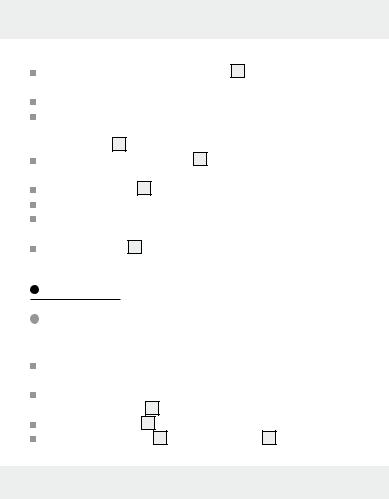
Preparing for use / Operation
Receiver:
Remove the battery compartment cover 9 from the back of the device.
Remove the used batteries, if present.
Insert 2 batteries (1.5 V  , type AA).
, type AA).
Note: Ensure correct polarity. This is indicated in the battery compartment 10 .
Close the battery compartment 10 .
Transmitter:
Remove the holder 15 from the back of the transmitter.
Remove the used batteries, if present.
Insert a battery (3 V  , type CR 2032). The side marked “+” must face upwards.
, type CR 2032). The side marked “+” must face upwards.
Fasten the holder 15 of the receiver back on to the back of the device.
Operation
Synchronising transmitter / receiver
Synchronise the transmitter and receiver as follows:
As soon as the batteries are installed, the receiver enters synchronising mode.
You can also manually enter synchronising mode by holding the synchronising button 2 for approx. 3 seconds.
The signal indicator 1 on the receiver will light on.
Press the chime button 13 , the signal indicator 11 on the transmitter will illuminate once.
14 GB

Operation
The signal indicator 1 on the receiver will then blink. This is to indicate the synchronisation is successful.
NOTE: The synchronisation mode can only last for approx. 2 minute. If you cannot synchronise your transmitter and receiver, please enter synchronising mode again.
NOTE: After the transmitter and receiver have been successfully synchronised, wait for approx. 2 minutes until a visual signal appears. The signal display 1 on the receiver goes out after 2 minutes, the transmitter and receiver are synchronised.
Setting the signal type
The receiver can indicate the reception of a door signal either optically or acoustically or both optically and acoustically.
Using the signal type selector button 5 , select whether the signal is to be indicated optically or acoustically or both optically and acoustically.
Setting the volume
Press the volume button 3 until the desired volume is reached. There are a total of 4 possible volume settings: very loud, loud, medium, soft.
GB 15

Operation / Cleaning and maintenance
Selecting the chime
Note: The doorbell has 36 different chimes.
Press the melody selection button 4 . The first audible signal sounds.
Press the melody selection button 4 again to move on to the next audible signal.
Repeat this process until you have selected your desired audible signal. The last-selected audible signal is automatically stored.
Troubleshooting
After the influence of extraordinary environmental conditions (e.g. a strong electromagnetical field) the function of the item may be affected. In this case, please take off the batteries of both appliances for approximately 2 minutes. Then proceed again as described in the section “Synchronising the transmitter / receiver”.
Electrostatic discharges may lead to malfunctions. If such malfunctions do occur, remove the battery for a short time and then replace it again. Then proceed again as described in the section “Synchronising the transmitter / receiver”.
Cleaning and maintenance
Under no circumstances should you use liquids or detergents, as these will damage the device.
The device should only be cleaned on the outside with a soft dry cloth.
16 GB

Disposal
Disposal
The packaging is made entirely of recyclable materials, which you may dispose of at local recycling facilities.
Contact your local refuse disposal authority for more details of how to dispose of your worn-out product.
To help protect the environment, please dispose of the product properly when it has reached the end of its useful life and not in the household waste. Information on collection points and their opening hours can be obtained from your local authority.
Faulty or used batteries must be recycled in accordance with Directive 2006 / 66 / EC. Please return the batteries and / or the device to the available collection points.
Pb
Environmental damage through incorrect disposal of the batteries!
Batteries may not be disposed of with the usual domestic waste. They may contain toxic heavy metals and are subject to hazardous waste treatment rules and regulations. The chemical symbols for heavy metals are as follows: Cd = cadmium, Hg = mercury, Pb = lead. That is why you should dispose of used batteries at a local collection point.
GB 17

Information / Warranty
Information
Declaration of conformity
We, OWIM GmbH & Co. KG, Stiftsbergstraße 1, D-74167 Neckarsulm, hereby declare under our sole responsibility that the product: Wireless Doorbell, Model No.: Z31370A / Z31370B, Version: 12 / 2014, to which this declaration refers, complies with the standards / normative documents of 1999 / 5 / EC.
The complete declaration of conformity can be viewed at: www.owim.com.
Warranty
The device has been manufactured to strict quality guidelines and meticulously examined before delivery. In the event of product defects you have legal rights against the retailer of this product. Your legal rights are not limited in any way by our warranty detailed below.
18 GB
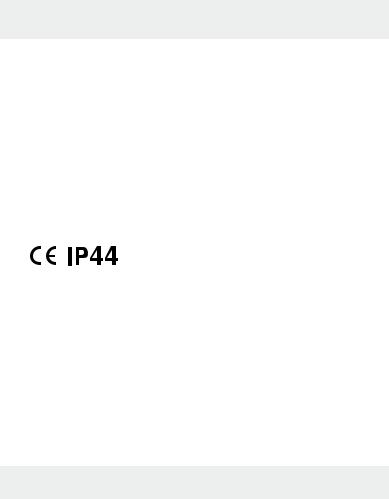
Warranty
The warranty for this device is 3 years from the date of purchase. Should this device show any fault in materials or manufacture within 3 years from the date of purchase, we will repair or replace it – at our choice – free of charge to you.
The warranty period begins on the date of purchase. Please keep the original sales receipt in a safe location. This document is required as your proof of purchase. This warranty becomes void if the device has been damaged or improperly used or maintained.
The warranty applies to faults in material or manufacture. This warranty does not cover product parts subject to normal wear, thus possibly considered consumables (e.g. batteries) or for damage to fragile parts, e.g. switches, rechargeable batteries or glass parts.
GB 19

Spis zawartości |
|
|
Wstęp |
|
|
Zastosowanie zgodne z przeznaczeniem........................................ |
Strona |
21 |
Parametry techniczne.......................................................................... |
Strona |
21 |
Zakres dostawy................................................................................... |
Strona |
22 |
Przegląd części................................................................................... |
Strona |
22 |
Bezpieczeństwo......................................................................... |
Strona |
23 |
Wskazówki ogólne dotyczące bezpieczeństwa............................. |
Strona |
24 |
Wskazówki bezpieczeństwa dotyczące baterii.............................. |
Strona |
24 |
Montaż............................................................................................... |
Strona |
26 |
Uruchomienie |
|
|
Zakładanie / wymiana baterii............................................................ |
Strona |
26 |
Obsługa |
|
|
Synchronizacja nadajnika / odbiornika............................................ |
Strona |
27 |
Ustawianie rodzaju sygnału............................................................... |
Strona |
28 |
Ustawianie głośności.......................................................................... |
Strona |
28 |
Wybór dźwięku dzwonka.................................................................. |
Strona |
29 |
Usuwanie błędów............................................................................... |
Strona |
29 |
Czyszczenie oraz pielęgnacja...................................... |
Strona |
30 |
Usuwanie......................................................................................... |
Strona |
30 |
Informacje |
|
|
Deklaracja zgodności......................................................................... |
Strona |
31 |
Gwarancja...................................................................................... |
Strona |
32 |
20 PL

Wstęp
Dzwonek do drzwi sterowany radiowo
Q Wstęp
Prosimy o dobre przechowywanie instrukcji. W przypadku przekazania produktu w ręce osoby trzeciej, należy przekazać jej również wszystkie dokumenty.
Q Zastosowanie zgodne z przeznaczeniem
To urządzenie przeznaczone jest do bezprzewodowego przekazywania sygnału dzwonka. Urządzenie nie jest przeznaczone do użytku komercyjnego.
Parametry techniczne
Zasięg: |
100 m (w otwartym terenie) |
|||||
Częstotliwość nadajnika: |
433 MHz |
|
|
|||
Typy baterii: |
Odbiornik: 2 x 1,5 V |
|
|
|
(typ AA / LR6), |
|
|
|
|
||||
|
Nadajnik: 1 x 3 V |
|
|
(typ CR2032) |
||
|
|
|||||
Odbiornik: |
Głośność dzwonka (przy maks. ustawieniu |
|||||
|
głośności): min. 73 dB (przy odległości od |
|||||
|
urządzenia wynoszącej 1 m) |
|||||
Nadajnik: |
Rodzaj ochrony: IP44 |
|||||
PL 21
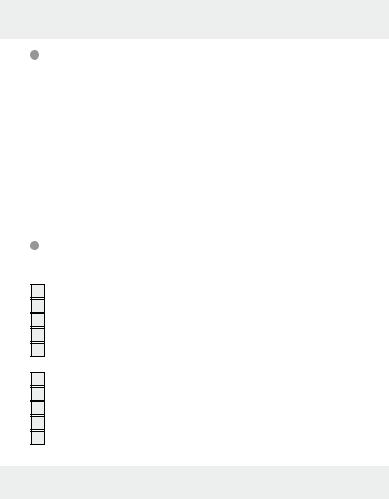
Wstęp
Zakres dostawy
1nadajnik
1odbiornik
2baterie 1,5 V 

 , typ AA (odbiornik)
, typ AA (odbiornik)
1bateria 3 V

 , typ CR2032 (nadajnik)
, typ CR2032 (nadajnik)
4śruby (dla nadajnika i montażu naściennego odbiornika)
3kołki
5 wymiennych wizytówek (dzwonek)
1 osłona tabliczki dzwonka
1 instrukcja obsługi
Przegląd części
Odbiornik (rys. A / B):
1Wskaźnik sygnału
2Przycisk synchronizacji
3Przycisk do ustawiania głośności
4Przycisk wyboru dźwięku dzwonka
5Przycisk wyboru rodzaju sygnału (optyczny, akustyczny, optyczny i akustyczny)
6Głośnik
7Podstawka
8Zawieszenie
9Wieczko przegródki na baterie
10 Przegródka na baterie
22 PL
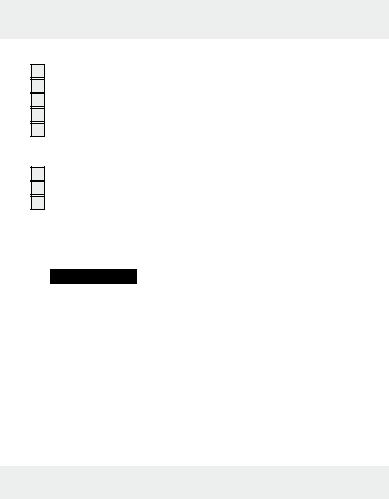
Wstęp / Bezpieczeństwo
Nadajnik (rys. C / D):
11Wskaźnik sygnału
12Wizytówka
13Przycisk dzwonka
14Przegródka na baterie
15Mocowanie (do montażu naściennego)
Montaż (rys. E / F):
16Śruba
17Kołek
18Śruba (nadajnik)
 Bezpieczeństwo
Bezpieczeństwo
 Ostrzeżenie! Należy przeczytać wszystkie wskazόwki bezpieczeństwa oraz instrukcje. Nieprzestrzeganie wskazόwek bezpieczeństwa oraz instrukcji może wywołać pożar oraz / lub ciężkie obrażenia.
Ostrzeżenie! Należy przeczytać wszystkie wskazόwki bezpieczeństwa oraz instrukcje. Nieprzestrzeganie wskazόwek bezpieczeństwa oraz instrukcji może wywołać pożar oraz / lub ciężkie obrażenia.
PRZECHOWUJ WSZYSTKIE WSKAZÓWKI DOTYCZĄCE BEZPIECZEŃSTWAI INSTRUKCJE NA PRZYSZŁOŚĆ!
PL 23
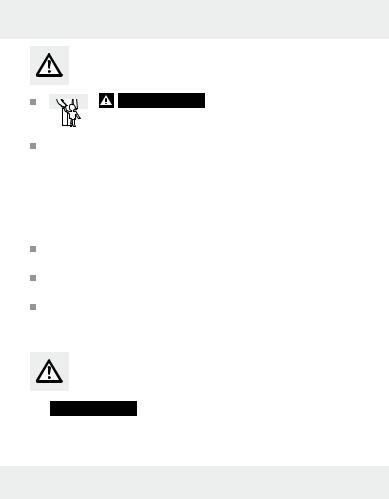
Bezpieczeństwo
Wskazówki ogólne dotyczące bezpieczeństwa
Ostrzeżenie! Dzieci ignorują często to zagro-
żenie. Nigdy nie dopuszczać dzieci do urządzenia. To nie jest zabawka.
Niniejsze urządzenie może być używane przez dzieci od lat 8 oraz przez osoby z obniżonymi zdolnościami fizycznymi, sensorycznymi lub mentalnymi lub brakiem doświadczenia i/lub wiedzy, jeśli pozostają pod nadzorem lub zostały pouczone w kwestii bezpiecznego użycia urządzenia i rozumieją wynikające z niego zagrożenia. Dzieci nie mogą bawić się urządzeniem. Czyszczenie i konserwacja przez użytkownika nie mogą być bez nadzoru przeprowadzane przez dzieci. Proszę sprawdzić czy wszystkie części są nienaruszone. Przy montażu uszkodzonych części istnieje niebezpieczeństwo wypadku. Proszę sprawdzić właściwe zamontowanie części. Przy niewłaściwym montażu istnieje niebezpieczeństwo wypadku.
Trzymać urządzenie z dala od otwartego ognia lub źródeł ciepła (np. płonących świec).
Wskazówki bezpieczeństwa dotyczące baterii
 Ostrzeżenie! ZAGROŻENIE DLA ŻYCIA! Baterie mogą zostać połknięte. Zagrożenie dla życia. W razie połknięcia baterii natychmiast udać się do lekarza.
Ostrzeżenie! ZAGROŻENIE DLA ŻYCIA! Baterie mogą zostać połknięte. Zagrożenie dla życia. W razie połknięcia baterii natychmiast udać się do lekarza.
24 PL

Bezpieczeństwo
NIEBEZPICZEŃSTWO WYBUCHU! Nigdy nie ładować baterii, nie zwierać i / lub nie otwierać ich. Grozi przegrzaniem, pożarem lub wybuchem.
Nie wrzucać baterii do ognia lub wody. Baterie mogą wybuchnąć. Zużyte baterie wyjąć jak najszybciej z urządzenia. Zwiększone niebezpieczeństwo wycieku elektrolitu!
Zawsze wymieniać wszystkie baterie w komplecie i używać wyłącznie baterii tego samego typu.
Nie łączyć ze sobą różnych typów baterii oraz baterii starych i nowych.
Zużytych baterii nie wyrzucać razem z odpadami domowymi! Zużyte baterie poddać utylizacji zgodnie z zasadami ochrony środowiska.
Proszę trzymać baterie z dala od dzieci, nie wrzucać ich w ogień, nie zwierać, nie otwierać.
Przy nie uwzględnieniu powyższych reguł baterie mogą się wyładować ponad swoje końcowe napięcie. Istnieje wtedy niebezpieczeństwo wycieku.
W razie wycieku baterii w urządzeniu proszę je natychmiast wyjąć, aby uniknąć uszkodzenia urządzenia!
Proszę unikać kontaktu ze skórą, oczami i śluzówką! W przypadku kontaktu z kwasem baterii natychmiast przemyć to miejsce dużą ilością wody lub / i skorzystać z pomocy lekarza.
Proszę nie używać baterii z możliwością ponownego ładowania! Proszę w żadnym wypadku nie zwierać biegunów!
Proszę nigdy nie używać równocześnie zużytych i nowych baterii! Jeżeli urządzenie nie jest przez dłuższy czas używane, baterię należy wyjąć.
PL 25

Bezpieczeństwo / Montaż / Uruchomienie
Podczas zakładania baterii zwrócić uwagę na prawidłowe ułożenie biegunów.
Montaż
Uwaga: Podczas montażu dzwonka drzwiowego jest potrzebny śrubokręt i wiertarka.
Uwaga: Do montażu używać wyłącznie śrub i kołków dostarczonych w komplecie.
Przymocowywanie odbiornika (patrz rys. E)
Przymocowywanie nadajnika (patrzy rys. F)
Uruchomienie
Przed pierwszym uz˙yciem prosimy o usunie˛cie folii ochronnej z tabliczki na nazwisko 12 nadajnika.
Zakładanie / wymiana baterii
 Przed uruchomieniem założyć baterie, które zasilają urządzenie.
Przed uruchomieniem założyć baterie, które zasilają urządzenie.  OSTROŻNIE! Używać wyłącznie zalecanego rodzaju baterii. W przeciwnym razie produkt może zostać uszkodzony.
OSTROŻNIE! Używać wyłącznie zalecanego rodzaju baterii. W przeciwnym razie produkt może zostać uszkodzony.
26 PL

Uruchomienie / Obsługa
Odbiornik:
Zdjąć wieczko przegródki na baterie 9 na tylnej ściance.
W razie potrzeby wyjąć zużyte baterie.
Włożyć 2 baterie (1,5 V 

 typu AA).
typu AA).
Uwaga: Zwrócić przy tym uwagę na właściwe ułożenie biegunów. Prawidłowe ułożenie jest wskazane w przegródce na baterie 10 .
Zamknąć przegródkę na baterie 10 .
Nadajnik:
Zdjąć mocowanie 15 znajdujące się na tylnej ściance nadajnika.
W razie potrzeby wyjąć zużyte baterie.
Włożyć jedną baterię (3 V  typu CR 2032). Strona baterii oznaczona znakiem „+“ musi być skierowana ku górze.
typu CR 2032). Strona baterii oznaczona znakiem „+“ musi być skierowana ku górze.
Przymocować element mocujący 15 nadajnika na tylnej ściance urządzenia.
Obsługa
Synchronizacja nadajnika / odbiornika
Zsynchronizować nadajnik i odbiornik w następujący sposób:
Po włożeniu baterii odbiornik przechodzi w tryb synchronizacji. W tryb synchronizacji można przejść także ręcznie, przytrzymując przycisk synchronizacji 2 przez ok. 3 sekundy.
Zaświeci się wskaźnik sygnału 1 na odbiorniku.
Naciśnij przycisk dzwonka 13 . Zaświeci się jednokrotnie wskaźnik sygnału 11 na nadajniku.
PL 27

Obsługa
Wskaźnik sygnału 1 na odbiorniku miga. Oznacza to, że synchronizacja zakończyła się z powodzeniem.
WSKAZÓWKA: Tryb synchronizacji trwa maks. 2 minuty. Jeśli nie uda się zsynchronizować nadajnika i odbiornika, ponownie wybierz tryb synchronizacji.
WSKAZÓWKA: Po pomyślnym zakończeniu synchronizacji nadajnika z odbiornikiem należy odczekać ok. 2 minuty do momentu, w którym pojawi się sygnał wizualny. Gdy wskaźnik sygnału 1 na odbiorniku zgaśnie po upływie 2 minut, nadajnik i odbiornik są zsynchronizowane ze sobą.
Ustawianie rodzaju sygnału
Odbiornik może wskazywać sygnał odebrany z drzwi w sposób optyczny, akustyczny lub przy użyciu obu sposobów.
Przy użyciu przycisku wyboru rodzaju sygnału 5 wybrać, czy sygnał ma być wskazywany optycznie, akustycznie lub przy użyciu obu sposobów.
Ustawianie głośności
Przytrzymać przycisk głośności 3 wciśnięty aż do osiągnięcia pożądanej głośności. Są dostępne 4 ustawienia głośności: bardzo głośno, głośno, średnio, cicho.
28 PL

Obsługa
Wybór dźwięku dzwonka
Uwaga: Jest dostępnych 36 różnych sygnałów.
Nacisnąć przycisk wyboru dźwięku dzwonka 4 . Włączy się pierwszy dźwięk.
Ponownie wcisnąć przycisk wyboru dzwonka 4 , aby przejść do kolejnego sygnału.
Powtarzać te czynności aż do wybrania pożądanego rodzaju dzwonka. Ostatni wybrany sygnał zostanie automatycznie zapisany.
Q Usuwanie błędów
Pod wpływem wyjątkowych warunków atmosferycznych (np. przy powstaniu silnego pola elektromagnetycznego) możliwe jest, że urządzenie przestanie funkcjonować jak należy. W takim wypadku proszę wyjąć z obydwu urządzeń baterie na 2 minuty. Następnie postępować zgodnie z instrukcja podaną w rozdziale „Synchronizacja nadajnika / odbiornika”.
Również wyładowania elektrostatyczne mogą powodować nieprawidłowe funkcjonowanie. W takich wypadkach proszę usunąć na chwilę baterie i następnie włożyć je z powrotem. Następnie postępować zgodnie z instrukcja podaną w rozdziale „Synchronizacja nadajnika / odbiornika”
PL 29

Czyszczenie oraz pielęgnacja / Usuwanie
Q Czyszczenie oraz pielęgnacja
JNie należy stosować cieczy oraz środkόw czyszczących. Mogą
one doprowadzić do uszkodzenia urządzenia.
jUrządzenie należy czyścić jedynie zewnętrzenie za pomocą miękkiej, suchej ścierki.
Q Usuwanie
Opakowanie wykonane jest z materiałów przyjaznych środowisku, które można usuwać w miejscowych punktach przetwarzania materiałów wtórnych.
Informacje o możliwościach dotyczących wyrzucania otrzymać można w urzędzie miejskim lub gminnym.
Nie należy wyrzucać zużytego produktu, w celu ochrony środowiska, do domowego kosza na śmieci, lecz w odpowiednio do tego przeznaczonych miejscach. Informacji o punktach zbiorczych i ich godzinach otwarcia udziela odpowiedni urząd.
Uszkodzone lub zużyte baterie muszą być poddane procesowi recyklingu zgodnie z wytyczną 2006 / 66 / EC. Baterie i / lub urządzenie należy zdać w lokalnym punkcie zbiorczym.
30 PL
